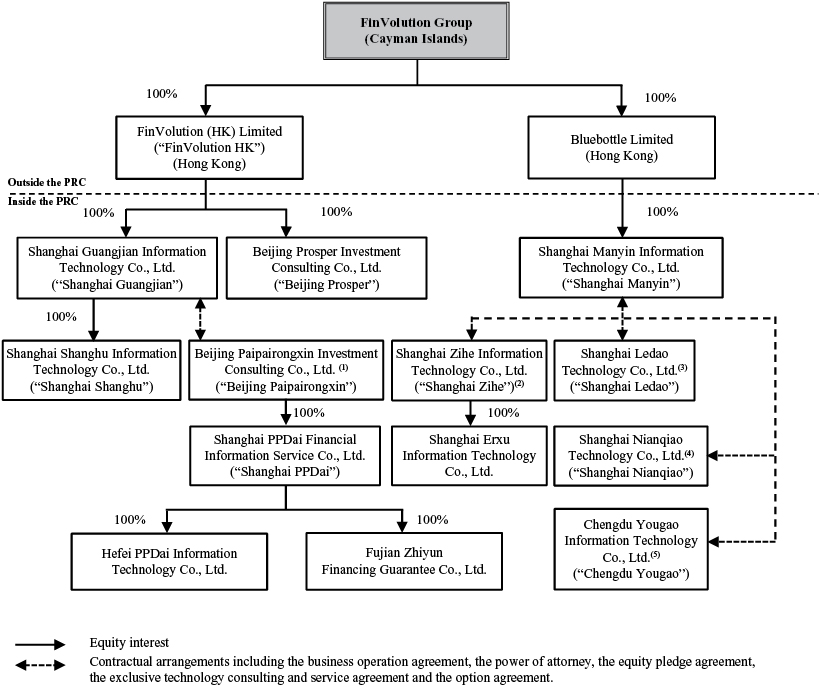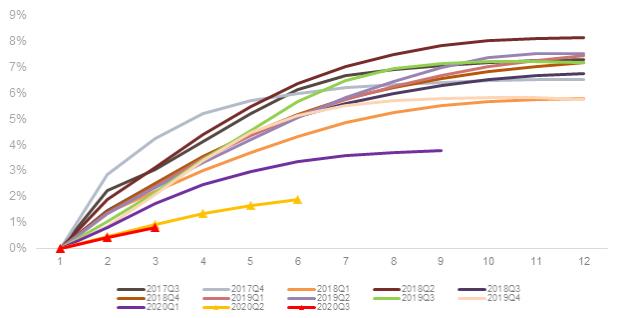On August 20, 2020, the Supreme People’s Court issued the Decision on Amending
the Provisions on Several Issues Concerning Laws Applicable to Trial of Private Lending Cases
, which is further amended by the Supreme People’s Court on December 29, 2020, or the Private Lending Judicial Interpretation Amendment, which amended the upper limit of private lending interest rates under judicial protection. The Private Lending Judicial Interpretation Amendment provides that where the lender requests the borrower to pay interest in accordance with the interest rate agreed upon in the agreement, the people’s court shall support such request, except where the interest rate agreed by both parties exceeds four times of the
one-year
Loan Prime Rate at the time of the establishment of the agreement, or the Quadruple LPR Limit. The
one-year
Loan Prime Rate refers to the
one-year
loan market quoted interest rate issued by the National Bank Interbank Funding Center which was authorized by the PBOC, on the 20
th
of each month since August 20, 2019. According to the Private Lending Judicial Interpretation Amendment, the upper limit of interest rates of 24% and 36% provided in the 2015 Private Lending Judicial Interpretation, are replaced by the Quadruple LPR Limit. Moreover, if the lender and the borrower agree on both the overdue interest rate and the liquidated damages or other fees, the lender may choose to claim any or all of them, but the portion in total exceeding the Quadruple LPR Limit shall not be supported by the people’s court. The Private Lending Judicial Interpretation Amendment applies to new first-instance cases of private lending disputes accepted by the People’s Court after the implementation of the Judicial Interpretation Amendment on August 20, 2020. If the lending occurred before August 20, 2019, the upper limit of the protected interest rate can be determined by referring to four times of the
one-year
Loan Prime Rate at the time of the plaintiff’s filing of lawsuit. On January 21, 2021, in the response letter to the Guangdong High People’s Court relating to the inquiry on the scope of application of the Private Lending Judicial Interpretation Amendment issued by the Supreme People’s Court, it further clarifies that seven types of financial organizations, including micro-loan lending companies and financing guarantee companies, are financial institutions licensed by the financial administrative authorities, and the disputes arising out of their financial business activities do not apply to the Private Lending Judicial Interpretation Amendment. However, as the regulatory authorities have wide discretion in administration, interpretation and enforcement of the laws and regulations, we cannot rule out the possibility that the regulatory authorities may hold different opinions on whether Quadruple LPR Limit applies to the loans funded by financial institutions on our platform. For example, according to
the Notice on Regulating and Rectifying “Cash Loan” Business
, or Circular 141, promulgated by the Internet Finance Rectification Office and the Online Lending Rectification Office in December 2017, in the context of “cash loan” business operated by various types of institutions, the aggregated borrowing costs of borrower charged in forms of interests and all kinds of fees should be annualized and subject to the upper limit on interest rate of private lending set forth in the judicial interpretations issued by the Supreme People’s Court. On March 31, 2021, the PBOC released its No. 3 announcement in 2021, or the PBOC No. 3 Announcement, which stipulates, among others, that the annual interest rate of a loan should be the annualized form of ratio calculated based on the percentage of all expenses charged from the borrower for the borrowing to the principal actually borrowed by this borrower. The expenses charged from the borrower include the interests and the various expenses directly related to the borrowing. If the loan is repaid in installments, the remaining principal after the deduction of the total repaid principal should be deemed as the actual borrowed principal when calculating the annual interest rate. Compound interest rate and simple interest rate are both allowed to be used to calculate the annual interest rate, provided that if simple interest rate is used, it should be explicitly disclosed to the borrower. The PBOC No. 3 Announcement applies to deposit-taking financial institutions, consumer finance companies, micro-loan lending company, and internet platforms providing loan application services like us. See “Item 3. Key Information—D. Risk Factors—Risks Related to Our Business—Interest rates of certain of our loan products exceed the statutory interest rate limit and therefore part of the interests is not enforceable through the PRC judicial system.”
The Circular 141 specifies the features of “cash loans” as not relying on consumption scenarios, with no specified use of loan proceeds, unsecured, and no qualification requirement on customers, among others. The Circular 141 also sets forth several general requirements with respect to “cash loan” business, including but without limitation: (i) the aggregated borrowing costs of borrowers charged by institutions in the forms of interest and various fees should be annualized and subject to the limit on interest rate of private lending set forth in the Private Lending Judicial Interpretations issued by the Supreme People’s Court;(ii) all relevant institutions shall follow the “know-your-customer” principle and prudentially assess and determine the borrower’s eligibility, credit limit and
cooling-off
period; (iii) all relevant institutions shall enhance the internal risk control and prudentially use the “data-driven” risk management model; (iv) all institutions are prohibited from extending any loans to any persons without repayment source or repayment capacity, or loans with no designated use of proceed; (v) funds from banks cannot be used for “cash loan” or “campus loan”; and (vi) in the case where a financial institution participates in the “cash loan” business, any third parties are not allowed to charge borrowers any interests or fees. Circular 141 further provides that financial institutions cooperating with third parties to engage in lending business (i) are not allowed to outsource any core lending business operations, such as credit assessment and risk management, to third parties, (ii) are not allowed to accept any credit enhancement provided by third parties without any license or approval to provide guarantees, including credit enhancement service in the form of a commitment to assume default risks, (iii) should comply with the judicial interpretations by the Supreme People’s Court of the PRC regarding interest rates in private lending regarding the annual borrowing cost charged to a borrower, i.e. interests plus other fees, and (iv) should ensure that third parties do not collect any interests or fees from borrowers.

